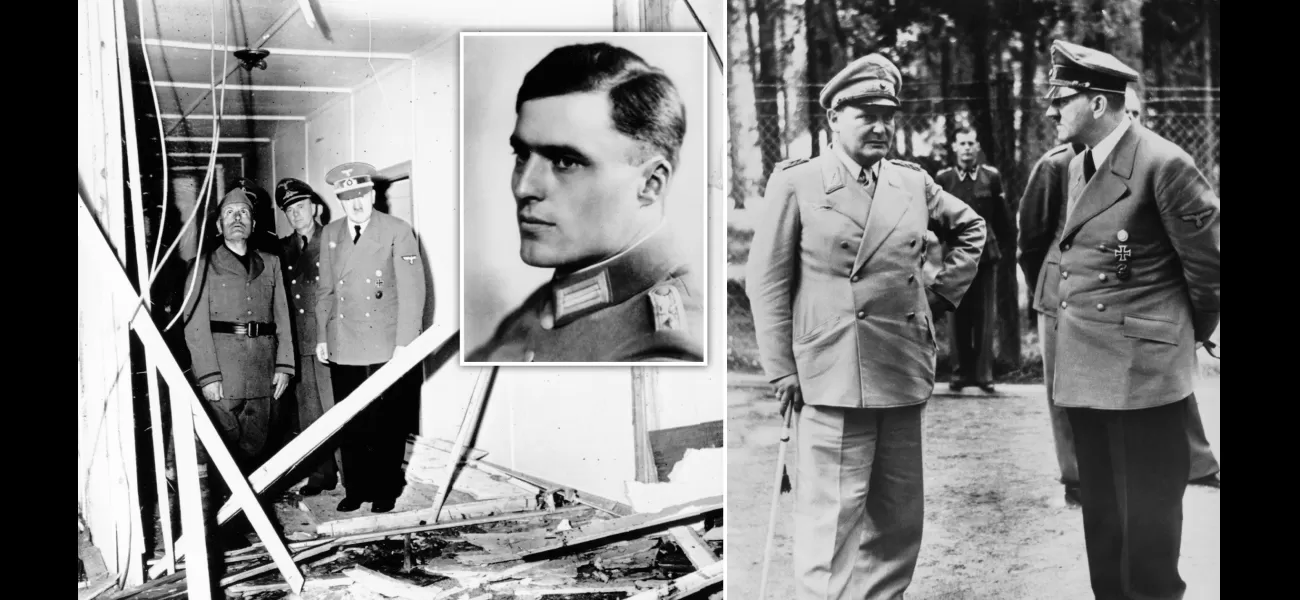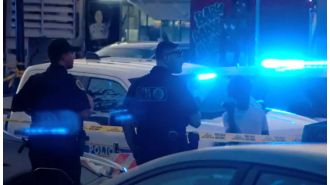80 years after the failed assassination attempt on Adolf Hitler known as Operation Valkyrie.
Only option is to murder him.
July 27th 2024.

Operation Valkyrie is known as the most famous attempt to assassinate Adolf Hitler. This bold plan was so close to succeeding that it sent shockwaves through Germany and the rest of Europe. The words, "There is nothing left but to kill him," were spoken by Colonel Claus Schenk Graf von Stauffenberg in July 1944, just before he embarked on the daring mission to take down the dictator.
Eighty years ago, on July 20, Stauffenberg placed a bomb under Hitler's desk during a meeting at his military headquarters in East Prussia. The goal was to not only eliminate Hitler, but also to trigger a takeover of Nazi Germany by the Replacement Army, led by Stauffenberg's co-conspirators. However, despite the meticulous planning and execution, the blast did not end Hitler's life and the plot quickly fell apart.
The tyrant would continue to live for another nine months before ultimately taking his own life in the Fuhrerbunker as the Red Army closed in on his Berlin headquarters. His reign had led Germany and half of Europe into destruction, exactly the outcome that the conspirators had hoped to avoid.
Before Operation Valkyrie, there had been previous attempts to take down Hitler. As early as 1938, there were whispers of a plot to overthrow the Fuhrer in order to prevent Germany from being dragged into another world war. However, these plans were met with indecision among the army high command and a reluctance from Western powers to stand up against Hitler's aggression.
By 1943, after multiple military defeats, a new group of conspirators led by Colonel Henning von Tresckow believed that the time had come for action. They called their plan "Operation Spark" and it involved taking control of Germany after Hitler's death. The first opportunity to eliminate Hitler presented itself in March of that year, but it was aborted due to the possibility of other senior army officers being killed along with him.
Another chance arose in March when Hitler was scheduled to attend an exhibition of captured Soviet war equipment. Colonel Rudolph-Christoph von Gersdorff, one of Tresckow's intelligence officers, was willing to sacrifice his own life to end Hitler's. He attempted to detonate a bomb during the exhibition, but Hitler left the event just two minutes before the bomb was set to explode.
Who was Colonel Claus Schenk Graf von Stauffenberg? Like many young officers, Stauffenberg was initially drawn to National Socialism, particularly its emphasis on a strong military. However, he rejected the Nazi's anti-Semitism and was horrified by reports of massacres carried out by the SS. He suffered severe injuries while serving in North Africa and by early September 1943, he was convinced that the only way to deal with Hitler was by killing him.
Stauffenberg was approached by the conspirators while he was recovering and became a leading figure in the plot. Since Hitler was constantly surrounded by armed bodyguards and those who tasted his food, they determined that a bomb was the only feasible option. In July 1944, Stauffenberg was appointed as Chief of Staff to General Friedrich Fromm, giving him access to Hitler's military meetings and an opportunity to carry out the assassination.
Despite multiple failed attempts, Stauffenberg and his co-conspirators refused to give up. On July 20, Stauffenberg flew to Hitler's Wolf's Lair headquarters with two bombs in his briefcase. Although the bomb exploded, it did not kill Hitler. He was able to survive with injuries to his arm and burst eardrums. The suspicion quickly fell on Stauffenberg, who had already left for Berlin, causing confusion and vital time to be lost for the other conspirators to launch the coup.
Hitler wasted no time in seeking revenge for the attempt on his life. He went on the radio to declare that he had been saved by "Providence" from a "tiny gang of criminal elements" who had tried to eliminate him and the army high command. He promised to "mercilessly eradicate" the conspirators, and that's exactly what he did. Stauffenberg and other leaders of the plot were arrested and executed by firing squad. In the aftermath, thousands of people were arrested and nearly 5,000 of them were killed for their involvement in the plot. It was a devastating end to a valiant effort to rid the world of a tyrannical dictator.
Eighty years ago, on July 20, Stauffenberg placed a bomb under Hitler's desk during a meeting at his military headquarters in East Prussia. The goal was to not only eliminate Hitler, but also to trigger a takeover of Nazi Germany by the Replacement Army, led by Stauffenberg's co-conspirators. However, despite the meticulous planning and execution, the blast did not end Hitler's life and the plot quickly fell apart.
The tyrant would continue to live for another nine months before ultimately taking his own life in the Fuhrerbunker as the Red Army closed in on his Berlin headquarters. His reign had led Germany and half of Europe into destruction, exactly the outcome that the conspirators had hoped to avoid.
Before Operation Valkyrie, there had been previous attempts to take down Hitler. As early as 1938, there were whispers of a plot to overthrow the Fuhrer in order to prevent Germany from being dragged into another world war. However, these plans were met with indecision among the army high command and a reluctance from Western powers to stand up against Hitler's aggression.
By 1943, after multiple military defeats, a new group of conspirators led by Colonel Henning von Tresckow believed that the time had come for action. They called their plan "Operation Spark" and it involved taking control of Germany after Hitler's death. The first opportunity to eliminate Hitler presented itself in March of that year, but it was aborted due to the possibility of other senior army officers being killed along with him.
Another chance arose in March when Hitler was scheduled to attend an exhibition of captured Soviet war equipment. Colonel Rudolph-Christoph von Gersdorff, one of Tresckow's intelligence officers, was willing to sacrifice his own life to end Hitler's. He attempted to detonate a bomb during the exhibition, but Hitler left the event just two minutes before the bomb was set to explode.
Who was Colonel Claus Schenk Graf von Stauffenberg? Like many young officers, Stauffenberg was initially drawn to National Socialism, particularly its emphasis on a strong military. However, he rejected the Nazi's anti-Semitism and was horrified by reports of massacres carried out by the SS. He suffered severe injuries while serving in North Africa and by early September 1943, he was convinced that the only way to deal with Hitler was by killing him.
Stauffenberg was approached by the conspirators while he was recovering and became a leading figure in the plot. Since Hitler was constantly surrounded by armed bodyguards and those who tasted his food, they determined that a bomb was the only feasible option. In July 1944, Stauffenberg was appointed as Chief of Staff to General Friedrich Fromm, giving him access to Hitler's military meetings and an opportunity to carry out the assassination.
Despite multiple failed attempts, Stauffenberg and his co-conspirators refused to give up. On July 20, Stauffenberg flew to Hitler's Wolf's Lair headquarters with two bombs in his briefcase. Although the bomb exploded, it did not kill Hitler. He was able to survive with injuries to his arm and burst eardrums. The suspicion quickly fell on Stauffenberg, who had already left for Berlin, causing confusion and vital time to be lost for the other conspirators to launch the coup.
Hitler wasted no time in seeking revenge for the attempt on his life. He went on the radio to declare that he had been saved by "Providence" from a "tiny gang of criminal elements" who had tried to eliminate him and the army high command. He promised to "mercilessly eradicate" the conspirators, and that's exactly what he did. Stauffenberg and other leaders of the plot were arrested and executed by firing squad. In the aftermath, thousands of people were arrested and nearly 5,000 of them were killed for their involvement in the plot. It was a devastating end to a valiant effort to rid the world of a tyrannical dictator.
[This article has been trending online recently and has been generated with AI. Your feed is customized.]
[Generative AI is experimental.]
0
0
Submit Comment





